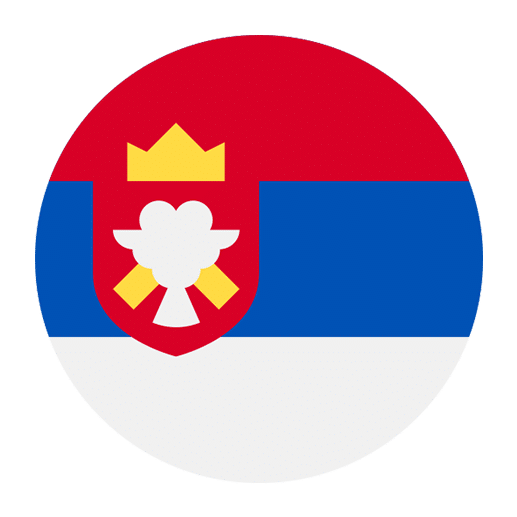The Balkan Peninsula, often referred to simply as the Balkans, is a region rich in history, culture, and linguistic diversity. Among the myriad of languages spoken in this area, Serbian holds a unique and influential role. Understanding the importance of the Serbian language in Balkan culture provides not only a deeper insight into the region’s history and social fabric but also opens up avenues for more meaningful engagement with its people.
Historical Context
The Serbian language is part of the South Slavic group of languages, which also includes Croatian, Bosnian, Montenegrin, Slovenian, Macedonian, and Bulgarian. The development of Serbian as a distinct language is closely tied to the history of the Serbian people and their interactions with neighboring cultures and empires.
The earliest records of the Serbian language can be traced back to the 9th century, with the advent of the Cyrillic script, which was developed by Saints Cyril and Methodius. This script played a crucial role in the spread of Christianity among the Slavic peoples and helped to standardize the language. Over the centuries, Serbian evolved through various stages, influenced by historical events such as the Ottoman and Austro-Hungarian empires’ rule over the region.
Medieval Era
During the medieval period, Serbian was the language of the Serbian Kingdom and later the Serbian Empire. This era saw the flourishing of Serbian literature, with notable works such as the “Miroslav Gospel,” a 12th-century manuscript that is one of the oldest surviving documents written in Old Serbian. The medieval period also saw the development of the “Raška” literary school, which produced significant religious and secular texts.
Ottoman Influence
The Ottoman conquest of the Balkans in the 15th century had a profound impact on the Serbian language and culture. Turkish words entered the Serbian lexicon, and many aspects of daily life and governance were influenced by Ottoman rule. Despite this, the Serbian language and Orthodox Christian faith remained central to the Serbian identity, serving as a unifying force for the Serbian people during centuries of foreign domination.
The Role of Serbian in the Formation of Yugoslavia
The 20th century brought significant political changes to the Balkans, with the formation and eventual dissolution of Yugoslavia. Serbian, along with Croatian and Slovenian, was one of the official languages of the Kingdom of Serbs, Croats, and Slovenes (later known as Yugoslavia) established in 1918. After World War II, Yugoslavia was reconstituted as a socialist federal republic, and Serbian, written in both Cyrillic and Latin scripts, remained a prominent language within the federation.
The linguistic landscape of Yugoslavia was complex, with multiple languages spoken across its six republics. However, Serbian often served as a lingua franca, facilitating communication among people of different linguistic backgrounds. The use of both Cyrillic and Latin scripts in Serbian also symbolized the country’s attempts to bridge Eastern and Western cultural influences.
Post-Yugoslav Era
The breakup of Yugoslavia in the 1990s resulted in the emergence of several independent states, each with its own official language. Serbian, Croatian, Bosnian, and Montenegrin evolved as distinct standardized languages, though they remain mutually intelligible to a significant degree. In Serbia, the Serbian language, written primarily in the Cyrillic script, was reaffirmed as the official language.
In the post-Yugoslav era, the Serbian language continues to play a crucial role in the cultural and social life of the region. It serves as a medium for literature, media, education, and daily communication. The preservation and promotion of the Serbian language are also seen as vital to maintaining national identity and cultural heritage.
Serbian Language and Literature
Serbian literature has a rich and diverse tradition, reflecting the historical and cultural experiences of the Serbian people. From medieval religious texts to contemporary novels, Serbian literature provides a window into the nation’s soul.
Epic Poetry
One of the most distinctive features of Serbian literature is its epic poetry. These long narrative poems, often recounting historical events and legendary heroes, have been passed down through generations by oral tradition. The “Kosovo Cycle” and the “Marko Kraljević Cycle” are two of the most famous collections of Serbian epic poetry, celebrating the heroism and resilience of the Serbian people.
Modern Literature
In the 19th and 20th centuries, Serbian literature underwent significant transformations, influenced by European literary movements such as Romanticism, Realism, and Modernism. Prominent Serbian writers such as Vuk Stefanović Karadžić, Ivo Andrić, and Milorad Pavić made substantial contributions to world literature.
Vuk Stefanović Karadžić, a philologist and linguist, played a pivotal role in the standardization of the Serbian language and the collection of folk literature. Ivo Andrić, awarded the Nobel Prize in Literature in 1961, is best known for his novel “The Bridge on the Drina,” which explores the complex history and cultural interactions in the Balkans. Milorad Pavić’s innovative novel “Dictionary of the Khazars” challenged traditional narrative forms and gained international acclaim.
The Serbian Language in Contemporary Culture
Today, the Serbian language continues to thrive in various forms of cultural expression, including literature, music, film, and theater. Serbian authors, filmmakers, and musicians contribute to both national and global cultural landscapes, often addressing themes of identity, history, and social change.
Music
Serbian music encompasses a wide range of genres, from traditional folk music to contemporary pop and rock. Folk music, with its distinctive melodies and rhythms, remains an integral part of Serbian cultural identity. Modern Serbian musicians often blend traditional elements with contemporary styles, creating a unique and dynamic musical landscape.
Film and Theater
The Serbian film industry has produced numerous acclaimed films that have garnered international recognition. Directors such as Emir Kusturica and Goran Paskaljević have explored themes of war, displacement, and cultural identity in their work. Serbian theater also continues to be a vibrant and influential cultural force, with a rich tradition of drama and performance.
Language and Identity
The Serbian language is more than just a means of communication; it is a key component of national identity and cultural heritage. For Serbians, their language embodies their history, values, and collective memory. It serves as a connection to their past and a means of expressing their unique cultural identity.
Language Preservation
In the face of globalization and linguistic homogenization, efforts to preserve and promote the Serbian language have taken on increased importance. Language preservation initiatives include educational programs, literary festivals, and the publication of works in Serbian. These efforts aim to ensure that future generations continue to have access to their linguistic and cultural heritage.
Learning Serbian: A Gateway to the Balkans
For language learners, studying Serbian offers a unique opportunity to engage with the rich cultural tapestry of the Balkans. Here are some compelling reasons to learn Serbian:
1. Cultural Insight: Learning Serbian provides a deeper understanding of the history, literature, and traditions of the Serbian people and the broader Balkan region.
2. Linguistic Diversity: Serbian is mutually intelligible with Croatian, Bosnian, and Montenegrin, allowing learners to communicate with a broader range of people in the former Yugoslav republics.
3. Travel and Communication: Knowing Serbian enhances travel experiences in Serbia and neighboring countries, facilitating meaningful interactions with locals and a more immersive cultural experience.
4. Academic and Professional Opportunities: Proficiency in Serbian can open doors to academic research, international business, and diplomatic careers, given Serbia’s strategic location in the Balkans.
5. Personal Enrichment: Learning a new language enriches one’s cognitive abilities and broadens one’s worldview, fostering greater empathy and cross-cultural understanding.
Tips for Learning Serbian
If you’re inspired to learn Serbian, here are some practical tips to get started:
1. Start with the Basics: Familiarize yourself with the Serbian alphabet (Cyrillic and Latin) and basic phrases. Online resources, language apps, and textbooks can be valuable tools.
2. Immerse Yourself: Surround yourself with the language by listening to Serbian music, watching Serbian films, and reading Serbian literature. Immersion helps improve listening and comprehension skills.
3. Practice Speaking: Engage in conversations with native speakers, whether through language exchange programs or online platforms. Speaking practice is crucial for building fluency and confidence.
4. Study Grammar: Understanding the grammatical structure of Serbian is essential for effective communication. Invest time in studying verb conjugations, noun declensions, and sentence structure.
5. Consistency is Key: Regular practice is essential for language learning. Set aside dedicated time each day to study and practice Serbian, even if it’s just a few minutes.
Conclusion
The Serbian language plays a vital role in the cultural and historical fabric of the Balkans. From its medieval literary traditions to its contemporary cultural expressions, Serbian serves as a bridge connecting the past and present. For language learners, studying Serbian offers a unique opportunity to engage with a rich and diverse cultural heritage, gain insight into the Balkan region, and open doors to new experiences and opportunities.
Whether you’re drawn to Serbian literature, music, history, or simply the challenge of learning a new language, the journey of studying Serbian promises to be a rewarding and enriching experience. Embrace the adventure, and let the Serbian language guide you through the fascinating world of Balkan culture.

